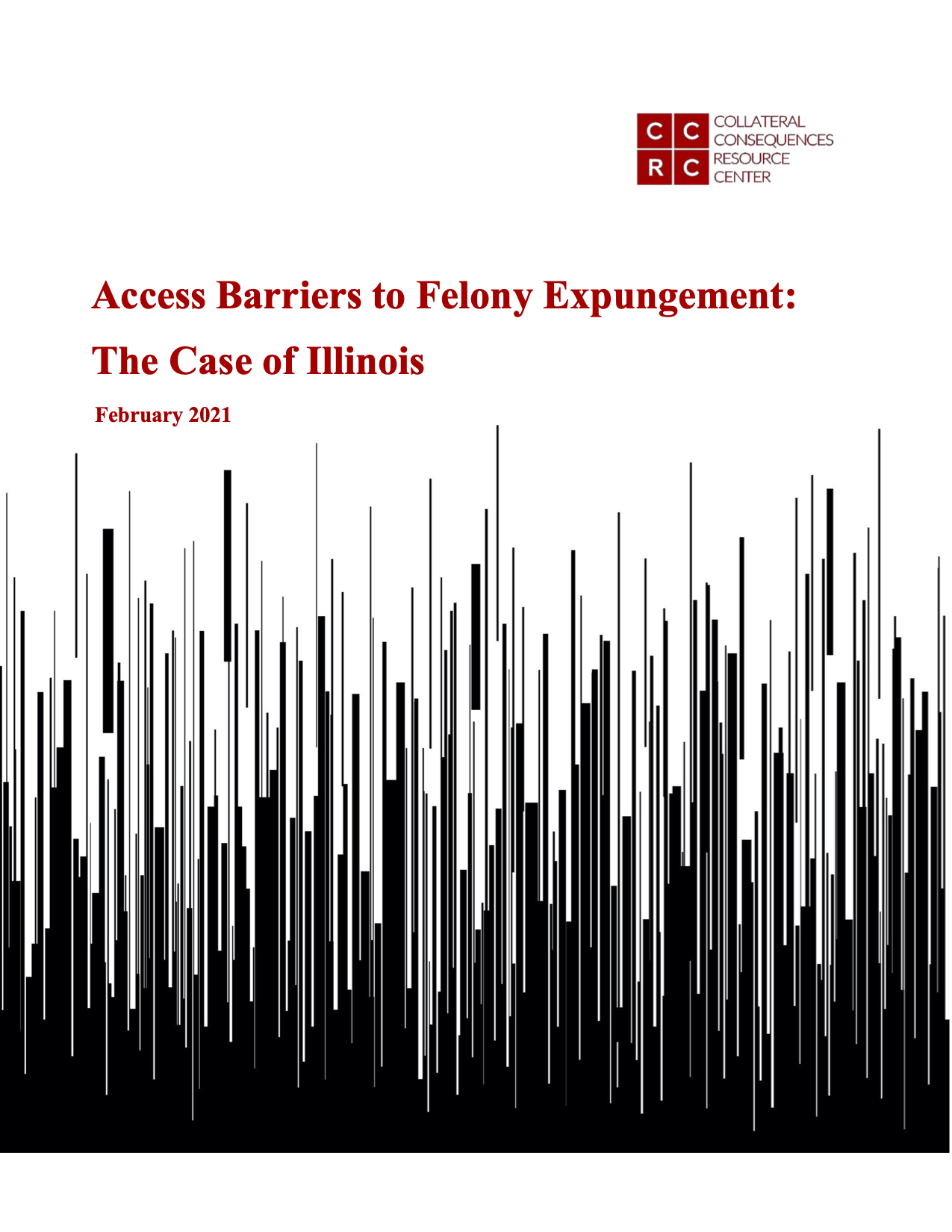Access Barriers to Felony Expungement: The Case of Illinois
Currently, 33 states authorize the expungement or sealing of at least some felony convictions.i However, recent research has shown that only a small percentage of eligible individuals actually complete the court petition process required to obtain this relief in most jurisdictions.ii In the fall of 2020, as an outgrowth of its work surveying record relief laws in the 50 states, the Collateral Consequences Resource Center (CCRC) decided to take a closer look at barriers that prevent people with felony convictions from accessing relief intended to benefit them.
Ideally, the most efficient way to overcome access barriers would be to make sealing automatic, dispensing with the requirement of filing individual petitions. However, the move toward automatic sealing is in its early stages,iii and we anticipate that petitions will remain the primary way to clear felony conviction records in most states for the foreseeable future. Accordingly, it is important to minimize barriers to petition-based relief at every level.
In order to minimize barriers, they must first be identified and documented. We have therefore begun work on a project to analyze barriers to petition-based sealing of felonies in a number of different states. This will hopefully encourage those states to reform their process to retain only substantive and procedural requirements that are truly necessary from a policy perspective, and to shift burdens now placed on individual applicants to the government wherever practicable. At the same time, the revealed difficulty of accessing petition-based relief on an equitable basis would be a strong incentive to consider automation, and the costs and benefits of each process could more easily be compared.
As a preliminary step toward launching this project, we collaborated with Beth Johnson and her partners in the Rights and Restoration Law Group (RRLG) to develop a survey instrument that collects information about access barriers to felony expungement across four domains: (1) resource and knowledge; (2) eligibility; (3) process; and (4) effectiveness. We tested our survey instrument with practitioners from several states. Beth and her team took the survey for their home state of Illinois and analyzed the strengths and weaknesses of the state’s record-sealing system.iv
We are publishing the RRLG Illinois report that follows as a pilot for additional state-specific studies. It provides detailed descriptions of the Illinois system’s strengths and weaknesses in the four areas identified above, and makes recommendations for reform. RRLG’s survey responses are in the appendix.
The Illinois report is available as a PDF here, and included in this post below.
We hope to be able to broaden this project to work with practitioners from additional states to complete the survey and write up case studies, on the basis of which we could recommend state-specific reforms as well as more general best practices. In addition to this project, we have been collaborating with Jessica K. Steinberg, director of the Prisoner & Reentry Clinic at GW Law, on an initiative in which the clinic has created a survey tool and conducted data collection on pro se access barriers to felony expungement in 34 states, with a white paper planned for later this year.
In the meantime, here are links to the survey questions used for this report. We invite anyone interested to complete it, to help us gather data for this undertaking:
Part I. Resource & Knowledge Barriers: https://forms.gle/MxRYtcpvMahYybcM7
Part II. Eligibility Barriers: https://forms.gle/RHQo92DedtddqyrJ7
Part III. Process Barriers: https://forms.gle/nAjUHKwKjmbKzXMZ9
Part IV. Effectiveness Barriers: https://forms.gle/t2iNh1RPJDPLDkXm7
